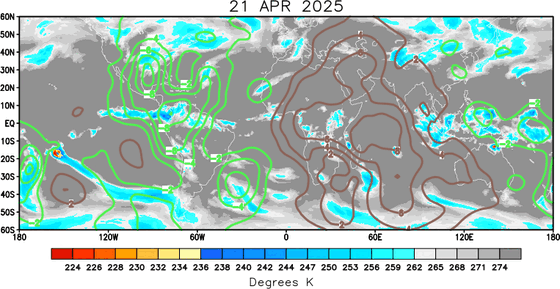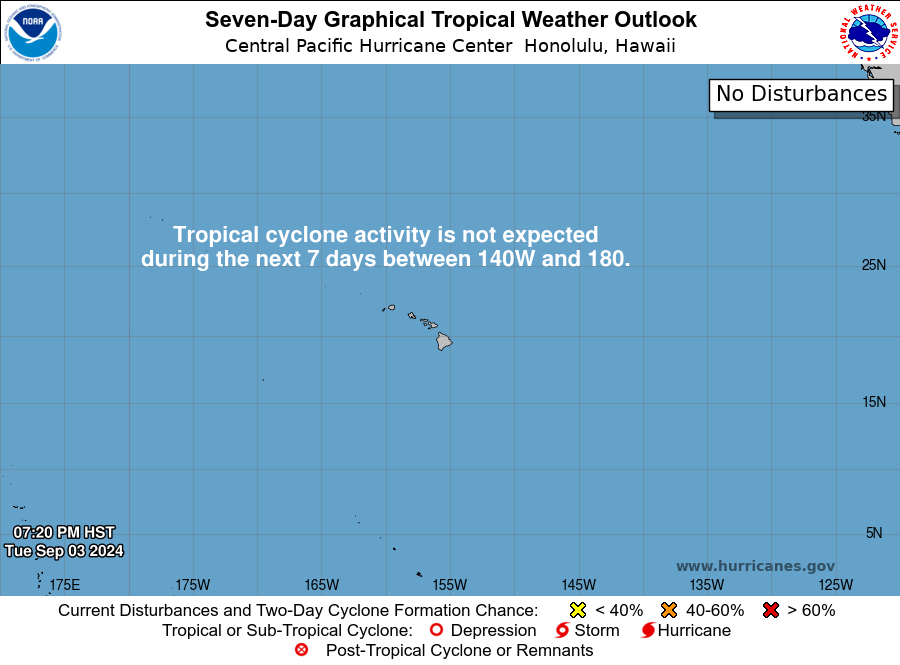Jacksonville, Fl. — The “Buresh Bottom Line”: Always be prepared!.....First Alert Hurricane Preparation Guide... City of Jacksonville Preparedness Guide... Georgia Hurricane Guide.
STAY INFORMED: Get the * FREE * First Alert Weather app
FREE NEWS UPDATES, ALERTS: Action News Jax app for Apple | For Android
WATCH “Preparing for the Storm”
WATCH “The Ins & Outs of Hurricane Season”
READ the First Alert Hurricane Center “Preparation Guide”
Federal Alliance for Safe Homes (FLASH) * here *.
***** ALWAYS CHECK & RE-CHECK THE LATEST FORECAST & UPDATES! ****
Tropics threats for Jacksonville/NE Florida/SE Georgia: None though Tuesday but impacts later Wed. into Thursday from “Milton”.
LOCAL IMPACTS FROM MILTON FOR JACKSONVILLE/NE FLORIDA & SE GEORGIA:
* There is still plenty of uncertainty in this forecast so impacts will be changing & will have to be amended/updated. The exact track will be critical for how much rain falls... there will be strong winds area wide but strongest over NE Fl. & the coast of SE Ga.
* I understand there are “scary” headlines & social media posts out there. I will remain constant, vigilant, responsible & as consistent as possible with the local impacts. There is no need to panic but checking & updating storm/hurricane preparedness kits & plans should be underway. If you live an evacuation zone & you become alerted to a ‘mandatory’ evacuation, the best advice is to ... EVACUATE. There will be decent weather through Tuesday evening to continue preparations. Be sure to secure any & all objects that could be blown around by strong winds. If you live in a flood prone area, be prepared for considerable flooding and the need to get to higher/dry ground.
* AS OF RIGHT NOW... it continues to look like the greatest impacts to the local area will be *south & east of hardest hit areas from Helene* - the Lake City to Waycross corridor.
* RAIN - After 1-2+ inches of rain over the weekend & the wet last few months... the “table is set” for flooding when heavy rain from Milton reaches the local area Wed. into Thursday. There is a lot of water in the “system”.... the ground is saturated... we’re in the seasonal King Tides cycle... & flooding will easily occur during heavy rain & due to storm surge. Rainfall amounts Wed. through Thu. look to be heaviest across NE Fl. near/east of Highway 301 & near & south of I-10 & may be reach 5-10″+ depending on exact track of Milton. Amounts may exceed a 10″ over St. Johns & parts of Clay & Putnam Co. with some areas 12″+. Forecast models range widely on exact rainfall with some flip-flopping from one model run’s output to the next... and there will be a tight gradient to lighter amounts north & west of Jacksonville & farther away from Milton’s center. If Milton turns east earlier across Florida, the somewhat lower rainfall amounts will be the way to go... but still significant for especially parts of Duval, St. Johns, Clay Putnam & Flagler Co. Just across Duval Co., rainfall amounts appear to be falling in a range from 1-2″ NW Duval to 3-6″ SE Duval.
* WINDS will be breezy with onshore flow through Wed. morning. Then winds will increase markedly late Wed. through Thu. with the closest approach of Milton but still about 150 miles south of Jacksonville. Trees will again be susceptible to being rather easily uprooted due to the saturated ground + some trees have been weakened by Helene’s winds last week. Sustained winds at tropical storm force - 40+ mph - appear likely for parts of NE Florida with hurricane force - 75+ mph - gusts closer to the coast & beaches & parts of Clay, St. Johns, Putnam & Flagler Co. Sustained winds 15-25mph for SE Ga. with gusts 30+ mph but along the Ga. coast sustained winds will be 25-35 mph with gusts 40-50+ mph. Wind direction will out of the east (onshore) through Wed. night into Thu. then shift to more out of the northeast then north/northeast later Thursday. Due to the path offshore to the south of NE Fl, there will *not* be a nice, clean offshore component to the winds following Milton.
* COAST: Milton looks very rough & damaging for the beaches with an extended period of onshore flow increasing in intensity through Wed.-Thu. before becoming more northeast later Thu. into Friday. Expect heavy to severe beach erosion & coastal flooding. Seas will easily be well into double digits... with breakers at the beaches of 10-15+ feet. All mariners should plan to be ready to stay in port & to have things buttoned up - or evacuating &/or moving vessels to a safer port - by late Wed. (10/9).
* STORM SURGE: Storm surge is forecast to be significant & average 3-5 feet along the coast of Duval, St. Johns & Flagler Co. but locally 6+ feet in parts of St. Johns & Flagler Co. Surge of 2-4 feet for the St. Johns River.
* Minor FLOODING can be expected along the St. Johns River & its tributaries through Wednesday, especially at high tide.. then at least moderate flooding Wed. night - Thu. With all the rain expected to fall north of the track of Milton, flooding will continue along the St. Johns River & its tributaries - especially near high tide - for weeks.
If you experienced flooding at the coast/beaches, intracoastal, Black Creek & St. Johns tributaries during Matthew, Irma or Nicole, you will likely experience flooding from Milton. While St. Johns River levels will be high with moderate flooding at times, it is *not* similar to Helene OR Irma since the center of Milton will be well south of Jacksonville (winds will not be blowing due north up the river toward d’town Jax).
* Isolated WATERSPOUTS & TORNADOES - low risk but some risk as bands northeast of the center rotate counterclockwise to the west & NW as Milton approaches then crosses Fl. Much higher tornado risk across Central & South Florida.
* POWER OUTAGES - Isolated outages over inland SE Ga. & North Central Florida becoming scattered over NE Florida & far/coastal SE Ga. near & a little either way of Highway 301... to potentially widespread outages near the I-95 corridor to the beaches.
“Buresh Bottom Line”:
* Milton over the Southern Gulf will move steadily east then turn northeast with a Florida landfall Wed. night (Oct. 9th) as a strong Cat. 3+ hurricane. This is a very high impact storm for most of Florida with the exception of far NW Fl. & the Panhandle. Remember that there WILL be changes in the forecast track &, therefore, exact impacts over the next couple days.
* “Leslie” is over the Eastern Atlantic stay far to the east over the open Atlantic.
* “The Hell that was Helene” - Buresh Blog.
The Atlantic Basin Overview:
(1) Heads-up Florida - hurricane preparedness should be completed by Wed. morning.
A Storm Surge WARNING: West coast of Florida from Flamingo northward to the Suwannee River, including Charlotte Harbor and Tampa Bay ... East coast of Florida from the Volusia/Brevard County Line northward to the mouth of the St. Mary’s River, including the St. Johns River.
A Hurricane WARNING: Celestun to Rio Lagartos ... Florida west coast from Bonita Beach northward to the mouth of the Suwannee River, including Tampa Bay ... Florida east coast from the Indian River/St. Lucie County Line northward to Ponte Vedra Beach
A Storm Surge WATCH: Sebastian Inlet to the Volusia/Brevard County Line ... Mouth of the St. Mary’s River to Edisto Beach
A Hurricane WATCH: Rio Lagartos to Cabo Catoche ... Dry Tortugas ... Lake Okeechobee ... Florida west coast from Chokoloskee to south of Bonita Beach
A Tropical Storm WARNING: Rio Lagartos to Cancun ... All of the Florida Keys, including Dry Tortugas and Florida Bay ... Lake Okeechobee ... Florida west coast from Flamingo to south of Bonita Beach ... Florida west coast from north of the mouth of the Suwanee River to Indian Pass ... Florida east coast south of the Indian River/St. Lucie County Line to Flamingo ... Florida east coast north of Ponte Vedra Beach to the mouth of the St. Mary’s River
A Tropical Storm WATCH: Coast of Georgia and South Carolina from north of the mouth of the St. Marys River to South Santee River, South Carolina.
* Forecast storm surge inundation interactive maps * here *.
Low pressure became tropical depression #14 over the Western Gulf Sat. morning & was upgraded to tropical storm “Milton” Sat. afternoon - the 13th named storm of the Atlantic season... the avg. date for the 13th storm is Oct. 25th... & to the 9th hurricane of the Atlantic season Sunday afternoon which is already above the avg. for an entire season. Milton became a ‘major’ Cat. 3 hurricane early Mon.... becoming a Cat. 5 by midday Monday. Milton then went through an eyewall replacement cycle Monday night causing some weakening that may have also been helped by proximity to the Yucatan Peninsula & the ingestion of some dry continental air. I would not be surprised if there’s an uptick in intensity again through Tue. night before reaching a more unfavorable area - higher shear & friction effects from Florida - Wednesday.
It’s very important to (1) not get caught up on the category of storm - recall that Katrina hit the Gulf Coast as a Cat. 3 but had a Cat. 5 storm surge... (2) not get fixated on the center point of Milton as any slight wobble will change the exact center point not to mention dangerous impacts will extend far away from the center.
There continue to be indications of a later landfall & a slower trek across Florida so there will be impacts into Thursday evening for much of the state. THERE WILL CONTINUE TO BE CHANGES & UPDATES!
Forecast models are in good agreement & confidence is high on a strong hurricane hitting the west coast of Florida.... pretty evenly matched on timing - Wed. night into Thursday morning as the recent model trend has been a slower crossing of Florida. There continue to be differences at landfall locations along the west coast. But there is much better consensus now with the very fine details where differences remain. The GFS has landfall near Tampa Bay just after midnight Wed./early Thu...the European model is near Tampa Bay with a little more NE forward motion & landfall about 3 hours later than the GFS. The Canadian model is similar to the UKMET continue weaker & farther south but trending north & stronger with time. It does look like there will be a decent turn east at some point while crossing Florida. This turn east would have very big implications for direct impacts & their intensity for Jacksonville & NE Florida, especially when it comes to rainfall.
The Climavision ‘Horizon AI’ global model seems to be a good compromise regarding the Milton’s track & intensity. The ‘Horizon’ initiated a trend late Thu. to stronger & more north with a strong hurricane going over the top of Tampa Bay Wed. night.... & has also trended slower with a sharper turn to the east across Fl. Thursday. The ‘Horizon’ was quite good with Helene. The ‘Horizon’ has been reasonably steady from one model run to the next since last Friday. Again - one recent trend has been more of a bend to the east after landfall - so more of a due east movement once near Orlando & east... & has also drifted just a bit south & east.
Weak low pressure to the east of Milton is moving across South Florida & may be interfering with model output for the moment & complicating the overall scenario with Milton... & may very well be why Milton drifted more southeast for a couple of days. I also wonder about whether or not this lead weak low will be strong enough to nudge a front south some which would possibly then take Milton a *little* more south ultimately though with the slower timing of Milton, there may be more time for the front to lift north some.
So the west &/or SW coast of Fl. is line for a ‘major’ hurricane Wed. night, exiting the east coast of Fl. Thu. possibly not until midday.
But beware! - this set-up remains in flux... AND regardless there is a consistent signal for very heavy rain & significant to major flooding for parts of Florida this week. Expect specific forecast details to ebb & flow until & unless forecast models can resolve the details & interaction of the weak surface low, upper trough & Milton itself.
As for the upper level - 500mb/30,000 feet - trough of low pressure diving down into the Eastern U.S. - it will have a lot to do with where Milton will ultimately go & how it will track across Florida. If the trough axis is far enough east, Milton should get shunted more east with time which is what the models are occasionally catching on to but showing inconsistency on that turn more east. This turn is very, very critical for exact impacts. Confluent upper level flow on the backside of the trough should continue at least some shear near Florida as well as a vector pointing SE - both of which could be factors in the structure of the storm & where Milton moves... & likely taking Milton off its peak upon approach to Florida but still an intense hurricane at landfall. Eyewall replacement cycles from time to time + friction from land by late Wed. will also likely have an effect on Milton’s strength. Bottom line is there will still be some changes on exact strength of Milton & its exact track to & across Florida.
But heads-up Florida!
Remember - the cone will get skinnier as Milton gets closer to Florida *but* impacts will extend well beyond the cone & certainly well beyond the center!


It’s critical to realize the impacts - wind field including damaging winds & flooding - will extend far beyond the forecast cone of Milton!

Climavision’s HorizonAI Global Model (this model uses its own data & analysis for initialization of each model run + some AI input) for 2am Thu., Oct. 10 then 8am Thu. then 2pm Thu. Indicates an intense hurricane to the immediate south of Tampa Bay followed by a turn more east along/near & even a little south of I-4 with an exit near Cape Canaveral Thu. afternoon. This is a little faster now ... & continues to indicate the sharper east turn which would have huge implications on impacts for Jacksonville/NE Fl./SE Ga.... it is also at least a little south of the GFS & European global models...
This is the ‘Horizon’ 500 mb (upper level) forecasts for early Wed., Oct 9th showing the trough over the Northeast U.S. with more of a “baggy” trough to the south interacting with “Milton”. This trough will impart some shear over/near Florida as well as a tendency to *possibly” suppress the tropical cyclone at least a little more south (vs. Gulf Coast).


Strong shear over Northern Gulf may tilt Milton at least some to the east. But Milton will moving in the direction of the shear vectors which may not hinder the storm as much as the magnitudes of 25+ mph typically might. Otherwise all other systems are “go” - warm to very warm water... lots of atmospheric moisture.
#firstalertwx considerations for #Milton - very warm water temps... warm deep oceanic heat content with very warm eddy E. Gulf... lots of moisture = favorable for strengthening... shear will increase with eastward extent but will be in line w/ forward movement so less detrimental pic.twitter.com/Ky3FSohWv2
— Mike Buresh (@MikeFirstAlert) October 5, 2024

Climavision ‘Horizon’ global forecast model indicates as much as 5-9″ for rain SE Duval Co., parts of Clay Co... & 10-12″+ for parts of St. Johns & Putnam Co.:
7-day forecast rainfall:






(2) “Kirk” quickly strengthened over the Eastern Atlantic. Kirk became a hurricane Tue., the 7th of the Atlantic season which does not occur until Nov. 15th in an “average” season... & became a ‘major’ Cat. 3+ hurricane Thu. before now feeling the effects of cooler water & increasing shear transitioning the storm to post-tropical. There will be impacts as a big ocean storm to parts of West/Northwest Europe Wed.-Wed. night. The average date for the 11th named storm is Sept. 14th so nothing at all unusual right now vs. climatology when it comes to named storms vs. the avg. Atlantic hurricane season.
(3) Tropical depression #13 has formed right behind - to the east of - & was upgraded to “Leslie” Wed. night & became a hurricane Fri. evening - the 8th of the Atlantic season & now exceeds the avg. for the entire season of 7 hurricanes. Like Kirk, sister Leslie will stay well out to the east over the Central Atlantic while weakening. The 12th named storm develops - on avg. - Oct. 11th.
Due to the intensity of the two storms, an easterly swell will emanate far to the west reaching the east coast through the upcoming week further enhancing the already high rip current risk at beaches along the east coast, Bermuda & the Caribbean.


‘Velocity potential anomalies’ below shows far less “sinking” air (brown lines) spreading across the Pacific Basin. With sinking air, tropical development can occur but overall conditions are not as conducive as when there is overall rising (green lines) air where convection is active. This “pulse” of upward motion has moved eastward & likely helped Helene & other Atlantic tropical cyclones & is past its peak. Milton managed to take advantage of the tail end of the “upward” pulse.

REMEMBER WHEN A TROPICAL STORM OR HURRICANE IS APPROACHING: Taping windows is *not* recommended & will not keep glass from breaking. Instead close curtains & blinds.
Realize the forecast cone (”cone of uncertainty”) is the average forecast error over a given time - out to 5 days - & *does not* indicate the width of the storm &/or where damage might occur.
The upper oceanic heat content (UOHC) [tropical cyclone heat potential/TCHP] across the SW Atlantic, Gulf & Caribbean is very high:






Water vapor loop (dark blue/yellow is dry mid & upper level air):


October tropical cyclone origins:
Averages below based on climatology for the Atlantic Basin for October:
Wind shear (red - strong shear; green - low shear):



Saharan dust spreads west each year from Africa driven by the prevailing winds (from east to west over the Atlantic). Dry air = yellow/orange/red/pink. Widespread dust is indicative of dry air that *can* interfere with the development of tropical cyclones. However, sometimes “wanna’ be” waves will just wait until they get to the other side of - or away from - the dust plume then try to develop if other conditions are favorable (we’ve already seen this with Beryl & Debby this year). In my personal opinion, there is way too much “hoopla” about the presence of Saharan dust & how it relates to tropical cyclones. In any case, the peak of Saharan dust typically is in June & July.

2024 names..... “Nadine” is the next name on the Atlantic list (names are picked at random by the World Meteorological Organization... repeat every 6 years). Historic storms are retired [Florence & Michael in ’18 (the last time this year’s list was used)... Dorian in ’19 & Laura, Eta & Iota in ‘20, Ida in ‘21 & Fiona & Ian in ‘22]). In fact, this year’s list of names is rather infamous because of the ‘04 season when Charley, Frances, Jeanne & Ivan - all retired names - hit Florida within a matter of about 6 weeks. The WMO decided - beginning in 2021 - that the Greek alphabet will be no longer used & instead there will be a supplemental list of names if the first list is exhausted (has only happened three times - 2005, 2020 & 2021). The naming of tropical cyclones began on a consistent basis in 1953. More on the history of naming tropical cyclones * here *.

Hurricane season climatology:




East Atlantic:





Mid & upper level wind shear (enemy of tropical cyclones) analysis (CIMMS). The red lines indicate strong shear:
Water vapor imagery (dark blue indicates dry air):

Deep oceanic heat content over the Gulf, Caribbean & deep tropical Atlantic. The colors will brighten greatly as the water warms to greater depths deeper into the season:

Sea surface temp. anomalies:


SE U.S. surface map:

Surface analysis centered on the tropical Atlantic:

Surface analysis of the Gulf:

Caribbean:

Atlantic Basin wave period forecast for 24, 48, 72 & 96 hours respectively:





East & Central Pacific:




Central Pacific:

Hawaii satellite imagery:


West Pacific:

Global tropical activity:




Cox Media Group

















